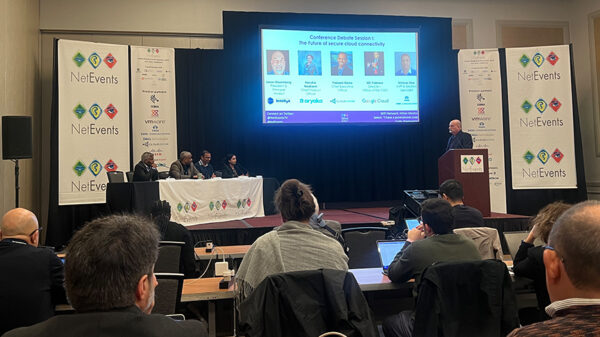When Philippine-based non-profit agricultural research center International Rice Research Institute (IRRI), based in Laguna, moved most its IT infrastructure to cloud company Amazon Web Services (AWS), it was able to cut IT costs by 50%.
Cutting cost is obviously one of the more defined benefits of cloud migration, as IRRI discovered, so that many of its functions have been shifted to the cloud. And these benefits are why, for Stephen Orban, AWS head of enterprise strategy, there is no time like the present to start using cloud.
“When you’re just starting with cloud, there’s no time like the present. Cloud is disruptive in a good way as it allows to diversify,” Orban said to Upgrade Magazine.
PLENTY OF HEADROOM
IRRI is, of course, only one example of organizations – both private and public – that are shifting to the cloud.
This January, RightScale conducted a survey on the state of the cloud, particularly looking at the latest cloud computing trends. With 930 IT professionals participating (with the respondents ranging from technical executives to managers and practitioners), it was reported that 82% of enterprises actually already have a hybrid cloud strategy, a figure higher than the 74% reported in 2014. Sixty-two percent of enterprises reported that central IT makes the majority of cloud spending decisions.
RightScale also reported that public cloud leads enterprise adoption, even if private cloud leads in workloads. Specifically, 88% of enterprises are using public cloud, while 63% are using private cloud.
There is room for development, nonetheless. According to RightScale, 68% of enterprises run less than a fifth of their application portfolios in the cloud. Also, 55% of enterprises reported that a significant portion (at least 20%) of their existing application portfolios are not in cloud, even if these are built with cloud-friendly architectures.
Not surprisingly, enterprises reported that they plan to use a portfolio of clouds, with 82% reporting a multi-cloud strategy, compared to 74% in 2014. RightScale’s survey also revealed that 55% of enterprises are planning for hybrid clouds, 13 % expect to use multiple public clouds, and 14% are planning for multiple private clouds.
Key players, aside from AWS, include vSphere, OpenStack, and Microsoft Azure Pack.
NEW NORMAL
Earlier interviewed by Upgrade Magazine in Singapore, Ernest Cu, GLOBE CEO, noted that “a lot of (business) executives still measure their power by – among others – the number of servers that they have, or the number of people that they manage.” As such, cloud adoption continues to be “an uphill climb”.
For Cu, therefore, a “new way of thinking” needs to be introduced, with businesses needing to change their approaches. “It’s innovate or die,” Cu said.
Markku Lepisto, principal technology evangelist, APAC of Amazon Web Services (AWS), agreed. For Lepisto, “cloud is now used to disrupt traditional industries”, and this disruption is understandable because of the numerous benefits of cloud adoption.
For Lepisto, cloud benefits include: the removal of upfront capital expenditure (CapEx); significant lower costs/lower variable expense; removal of the need to guess capacity; increase in speed and agility; removal of the need to spend money on undifferentiated heavy lifting; and the ability to go global.
CONNECTED WORLD
Lepisto added that the Internet of Things (IoT) is also furthering cloud use. “Nowadays, there are more devices connected to the Internet. The challenge is, if you have millions of devices on the field, you therefore have millions of customers to serve,” he said. And for those serving these millions of customers, cloud could be the answer to connectivity.
“How does the cloud help? First, with cloud, you have unlimited storage capacity. Second, you basically have unlimited computing capability,” Lepisto said. As such, “the cloud can serve as the brain in IoT solutions.”
For Peter Moore, regional managing director at AWS, “there’s too much interaction for anyone sector to ignore the cloud,” he said. This is why it is not surprising that – at least for AWS – “if we compare where we are now than a year before, I have seen a big shift. In the past they say why they can’t move to the cloud; now they are asking how. We’ve seen all sectors in the marketplace pick up.”
This is because businesses recognize that “people engagement is something they need to do, and cloud is something that needs to be tapped. You can’t do any of these things without the cloud.”
SECURITY ISSUES
A major issue affecting cloud adoption is security – highlighted, for instance, when experts gathered for the APAC Press & Service Provider VIP Summit in Singapore in May.
As Dan Pitt, executive director of Open Networking Foundation, said: “For many enterprises that turn to cloud, hybrid is the goal, and security is the issue.”
Amit Sinha Roy, vice president at TATA Communications, said that this concern is founded because “of the amount and the nature of information that we’re putting out, the layers of security required also increases.”
However, already, companies offering cloud-related services are offering security-specific services. All wanting to take a bite of APAC as an emerging market in this are the likes of Verizon, TATA Communications and Wedge Networks – all offering backend security services.
“Will we reach that point where we won’t worry about (security)? I’d say we’re a long way from that. But we keep improving in that level,” said Chris Rezentes, regional manager for partner and product strategy in Asia Pacific of Verizon.
BEYOND BUSINESSES
All the same, private businesses are not the only ones recognizing the benefits of cloud. This is because “there are functions that governments can tap in cloud,” Moore said. “Cloud provides an environment in which you collect data from a variety of sources, analyze that, and then make decisions and interact with citizens from that.”
In Australia, for instance, the emergency services has an app called “Fire Ready” to respond to bush fires; the app provides information to citizens on what areas to avoid (danger zones), et cetera. “This app has saved lives already,” Moore said.
As Richard Harshman, AWS head of ASEAN, claimed: “Cloud democratizes technology application. And the democratization is good for everyone.”
LOCAL CLOUD
The Philippines is actually considered as one of the important emerging markets for cloud adaption in ASEAN. AWS, for one, already has an edge location (or point-of-presence) in the country since 2014 for content delivery. This is to respond to the continuing growing number of cloud users.
Smart Communications Inc.’s Voyager Innovations Inc. uses cloud to provide services (for example, video-on-demand service) that complement its core telecommunications business. SeaOil uses enterprise applications on the cloud – allowing the company to cut costs, scale in accordance to the capacity required, and rid the company of the need to use on-premises datacenters. One of Splitmedia Labs’ applications, Xplit Media, uses cloud for live streaming and video-mixing application. Meanwhile, Lenddo – a startup company that empowers the emerging middle class to use their online social connections to build their creditworthiness to access local financial services and financial education – uses cloud for their proprietary algorithm that can be used for verification and credit scoring.
Back in Laguna, where IRRI is based, and where cloud adoption is becoming pervasive, cost is only one of the drivers for cloud migration. Because beyond the cost, cloud also enables the research center to carry out its functions in non-traditional ways.
For instance, it uses the cloud for its mobile projects that help farmers increase their productivity through information sharing on the use of fertilizers (particularly, which fertilizers can pollute water supplies and spoil cropland); as well as to sequence 120,000 database entries of genetic information on rice, thereby determining the types of rice strains that are resistant to droughts, pests, floods or diseases.
“People are realizing that they can do more things with cloud technology – they can’t achieve the same otherwise,” AWS’s Moore ended.
























































































































